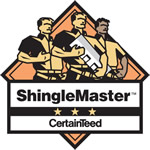Comparing Fascia Materials: Choosing the Right Option for Your Home

When it comes to home exteriors, one often overlooked but crucial element is the fascia. The fascia is the horizontal band that runs along the edge of the roof, supporting the gutter system and providing a finished look to the home. Choosing the right fascia material is essential for both aesthetic appeal and long-term durability. In this guide, we will explore various fascia materials, comparing their features, advantages, and drawbacks to help you make an informed decision for your home.
Wood Fascia
Natural Beauty and Traditional Appeal
Wood fascia has long been a popular choice for its natural beauty and classic appeal. It seamlessly blends with various architectural styles, adding warmth and character to the exterior of a home. Common wood choices for fascia include cedar, redwood, and pine.
Maintenance Challenges
While wood fascia is aesthetically pleasing, it comes with maintenance challenges. Wood is susceptible to rot, warping, and insect damage, especially in humid or rainy climates. Regular sealing, painting, and upkeep are necessary to prolong its lifespan, making it a high-maintenance option.
Aluminum Fascia
Durability and Low Maintenance
Aluminum fascia is known for its durability and low maintenance requirements. It is resistant to rot, insects, and corrosion, making it an excellent choice for homeowners seeking a long-lasting solution. Additionally, aluminum fascia is available in a variety of colors, providing flexibility in design choices.
Prone to Dents and Scratches
While aluminum is durable, it is not impervious to dents and scratches. Harsh weather conditions or accidental impacts can leave marks on the surface. However, many homeowners find the occasional aesthetic imperfections to be a minor trade-off for the overall benefits of aluminum fascia.
Vinyl Fascia
Cost-Effective and Versatile
Vinyl fascia has gained popularity for its cost-effectiveness and versatility. It is a budget-friendly option that offers a wide range of colors and styles. Vinyl is resistant to rot, insects, and weathering, requiring minimal maintenance.
Limited Color Customization
Despite its versatility, vinyl fascia has a limitation in color customization compared to aluminum. While it comes in various standard colors, homeowners with specific color preferences may find aluminum or other materials more accommodating to their needs.
Composite Fascia
The Best of Both Worlds
Composite fascia combines the benefits of different materials, offering the best of both worlds. Typically made from a mix of wood fibers and recycled plastics, composite fascia provides the natural look of wood without the high maintenance. It is resistant to rot, insects, and warping, making it a durable and aesthetically pleasing option.
Higher Initial Cost
While composite fascia can be more expensive upfront compared to some other materials, many homeowners consider it a worthwhile investment due to its durability and minimal maintenance requirements over the long term.
Choosing the Right Fascia Material
Consider Your Climate
The climate in your region plays a significant role in determining the ideal fascia material for your home. Wood may be more prone to issues in humid or rainy areas, while aluminum and vinyl are better suited for such conditions.
Maintenance Preferences
Consider your willingness and ability to perform regular maintenance tasks. If you prefer a low-maintenance option, aluminum, vinyl, or composite fascia may be more suitable than traditional wood.
Budget Considerations
Your budget will naturally influence your choice of fascia material. While wood may offer a classic look, it comes with higher maintenance costs. On the other hand, vinyl and aluminum are generally more budget-friendly options, with composite fascia falling somewhere in between.
Conclusion
Choosing the right fascia material for your home involves weighing the aesthetic preferences, maintenance considerations, and budget constraints. Each material has its own set of advantages and drawbacks, so it’s essential to prioritize your specific needs and the climate in your region. Whether you opt for the timeless beauty of wood, the durability of aluminum, the cost-effectiveness of vinyl, or the versatility of composite, making an informed decision will enhance the curb appeal and longevity of your home’s exterior.

In Awe Roofing Limited is an Award-Winning, family owned and operated Vancouver Roofing Contractor with over 17 years of roofing experience. We serve the entire Lower Mainland area, from Whistler to Chilliwack, employing a team of professional staff members. Our team has won numerous awards including Best of Homestars for the last five years, and Three Best Rated six years in a row. Learn more






















